.
Cleaning is a necessary task everyone has to do at some point. Unless perchance, your walls are black. But for most of us, dirty walls exist and we need to know how to clean walls fast and easy.
But when washing walls, what is the best technique? What detergent should you use? Or, what tools are necessary to clean walls as quickly and efficiently as possible? What about cleaning different paint finishes?
This article will break down wall washing into something that won’t be so overwhelming. Keep reading to learn how to clean wall stains, how to clean walls fast, and keep your sanity (and the quality of your paint finishes) in the process! Stay tuned for all our wonderful tips ahead.

Easiest Way To Clean Walls
There are a few ways that you can go about cleaning your walls. You can either use a wet rag and dish soap, or a sponge mop and dish soap. Whichever way you choose, make sure to rinse the walls well with clean water to remove all of the soap.
Cleaning Walls with a Wet Rag and Dish Soap
If you choose to clean walls with a wet rag and dish soap, start by filling a bucket with warm water and adding a few drops of dish soap. Then, wet your rag in the soapy water and start scrubbing the walls. Make sure to rinse the walls well with clean water to remove all of the soap. It’s really a great idea to keep two buckets handy to clean walls.
Cleaning Walls with a Mop and Dish Soap
If you choose to clean your walls with a mop and dish soap, start by filling a bucket with warm water and adding a few drops of dish soap. Then, dip your mop in the soapy water and start scrubbing the walls. Make sure to rinse the walls well with clean water to remove all of the soap.
If you want to clean high ceilings, you may need a ladder to reach them. Start by wetting a rag in the soapy water and then wiping down the ceiling. Make sure to rinse the ceiling well with clean water to remove all of the soap.
No matter which method you choose, make sure to rinse the walls well with clean water to remove all of the soap. This will help ensure that your walls are clean and free of any residue.
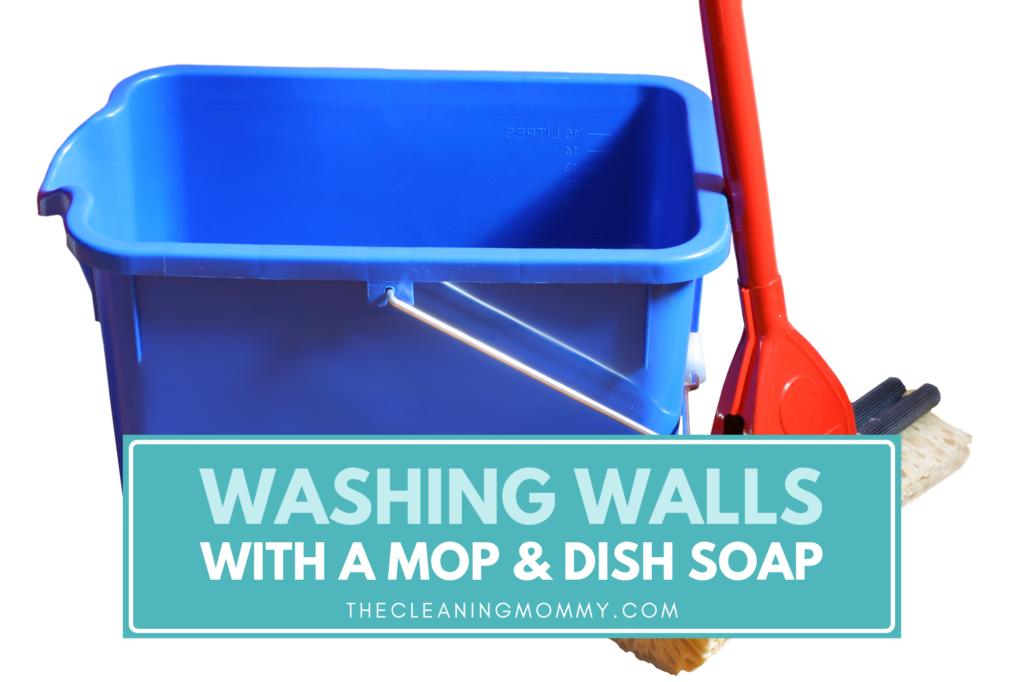
What Are The Best Wall Cleaners?
There are a variety of wall cleaners that you can buy at the store. Some of the most popular wall cleaners are made with vinegar and water. These cleaners are safe to clean walls and use on all surfaces, and they work to remove dirt, grease, and smudges.
Another popular type of wall cleaner is made with ammonia and water. This type of cleaner is also safe to use on all surfaces, and it works to remove dirt, grease, and smudges. It also helps to remove mold and mildew.
If you are looking for a more powerful wall cleaner, you may want to consider buying a cleaner that is made with bleach and water. This type of cleaner is not safe to use on all surfaces, but it does work to remove dirt, grease, smudges, mold, and mildew. It is also effective at removing graffiti. Or crayon scribblings from your youngster.
When using any type of cleaner, it is important to follow the instructions on the label. This will help ensure that you are using the cleaner correctly and safely. After you clean walls, you may want to consider painting them. This will help protect your walls from dirt, grease, and smudges
But what if you want to try a homemade cleaning solution?
How To Clean Walls With Vinegar
When it comes to walls, vinegar is a powerhouse. Not only does it remove dirt, grease, and smudges, but it also helps to remove mold and mildew. It is even effective at removing crayons and magic markers.
If you are looking for an all-purpose cleaner to use on your walls, vinegar is a good option. It is safe to use on all surfaces, and it is affordable and easy to find. Vinegar is also a natural disinfectant, so it can help to kill germs and bacteria.
The only issue with vinegar on painted walls is the acid content.
Although vinegar is an effective cleaner, it can also be harsh on paint. If your walls are painted it is best to avoid using vinegar, as it can strip the paint off the walls. If you must use vinegar, be sure to dilute it with water.
Test clean an inconspicuous area first to see how the cleaning solution will fair with your textured walls and flat walls.
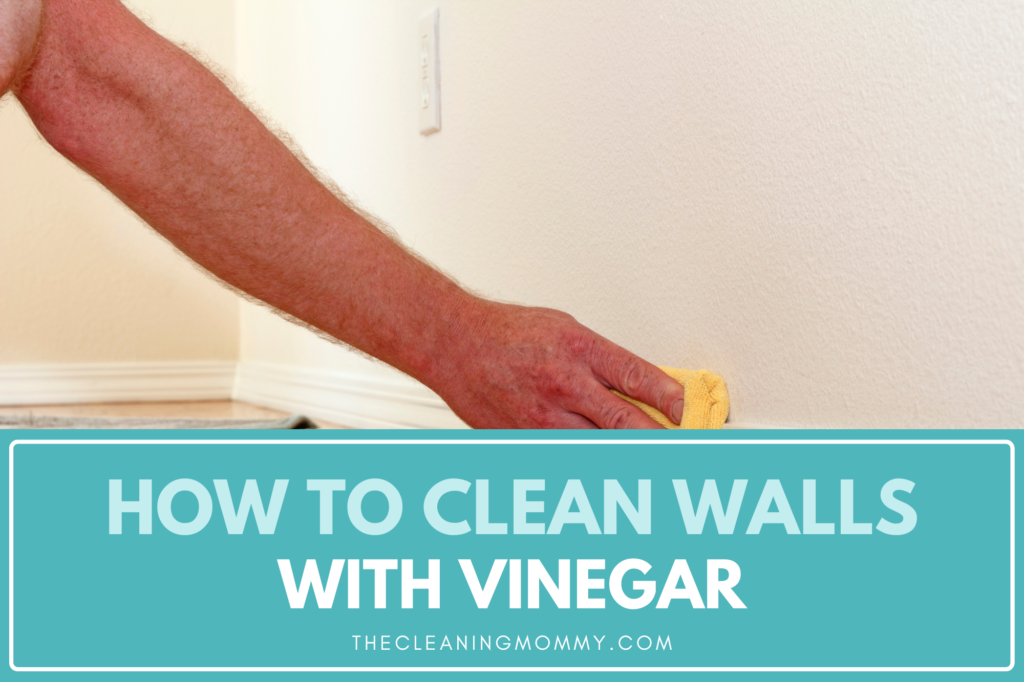
How To Clean Painted Walls with Vinegar
The ideal mixture of water and vinegar is 70/30, which works most of the time, but if there is ever an illness in your home, there needs to be a more robust solution, like 50/50 to kill germs.
Whatever ratio of water to vinegar you decide is going to work for your purpose, you can either pour it in a bucket or use a sponge and rag to clean the walls. Due to the acidity of the vinegar, rubber gloves are recommended.
Spray the solution directly onto the wall and mop it off, or add it to a clean spray bottle to avoid any kind of chemical mixture with disastrous results.
How To Disinfect Walls
The benefits of disinfecting walls with a vinegar solution are many. Not only does it kill germs and bacteria, but it is also a natural deodorizer. This means that it can help to get rid of any bad smells in your home.
Another benefit of disinfecting walls with vinegar is that it is affordable and easy to find. You can find vinegar at most grocery stores, and it is one of the most affordable cleaners on the market.
Disinfecting your walls with vinegar is a good idea for a number of reasons. It can help to keep your home free of germs and bacteria, and it can also help to get rid of any bad smells. Vinegar is an affordable and effective cleaner, so it is a good choice for disinfecting your walls.
Bleach is a powerful disinfectant, and it can help to kill germs and bacteria on your walls. However, it is important to note that bleach is not safe to use on all surfaces. It can be harsh on painted walls, and it can also strip the paint off when you clean walls.
If you are looking to disinfect your walls with bleach, be sure to test it on a small area first. This will help ensure that the bleach does not damage your walls.
Although bleach is a powerful disinfectant, it can also be harmful to your health. It is important to wear gloves and a mask when using bleach and to avoid contact with your skin. Bleach can also cause respiratory problems if inhaled.
Overall, bleach is a powerful disinfectant, but it comes with some drawbacks. It can be harsh on painted walls and it can also be harmful to your health. If you are looking for a safe and effective way to disinfect your walls, vinegar may be a better option.
You can use a Magic Eraser to remove stubborn stains (such as scuff marks). If that’s the case, you just need to dip it in clean water and work it gently around in circular motions. Paint that is shinier will require you to be more careful when applying it to avoid rubbing off the sheen.
When used for stain removal, Magic Erasers leave white film residue on walls, so wipe them down with a microfiber cloth or a clean sponge after using the Magic Eraser.
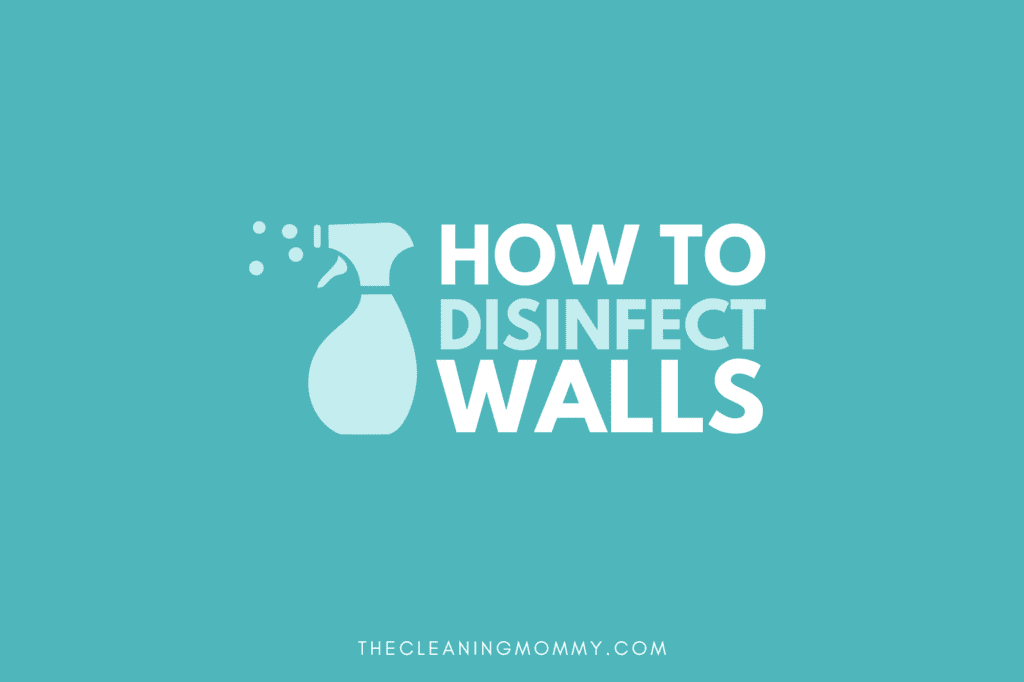
How To Clean Walls Without Streaks
It’s no secret that cleaning can be a daunting task. Not only is it time-consuming, but it can also be difficult to get the job done without leaving streaks behind.
However, there are a few tricks you can use to make the process a little bit easier. Here are four tips for cleaning without streaks.
Dust Your Walls Before Cleaning
Dusting your walls before you clean them can help to prevent streaks. Dusting will remove any loose dirt and dust from the surface of the wall, which will make it easier to clean.
You can use a vacuum cleaner with a brush attachment to dust before you clean walls, or you can use a dry microfiber cloth duster. Be sure to dust the entire surface of the wall, including the corners and edges.
Don’t Get Walls Too Wet
One of the most important things to remember when you clean painted walls are not to get them too wet. If the walls are too wet, they will be more likely to streak. You should always use a cloth or sponge when cleaning and never pour water directly onto the wall.
Be sure to wring out the cloth or sponge before you start cleaning painted walls, and keep rinsing it as you go. This will help prevent the water from dripping down the wall and causing streaks.
Use A Clean Cloth Or Sponge
It’s also important to use a clean cloth or sponge when you clean your walls. If you use a dirty cloth or sponge, it will only smear the dirt and dust around the wall and make it harder to clean. Be sure to rinse out your cloth or sponge often so that it stays clean.
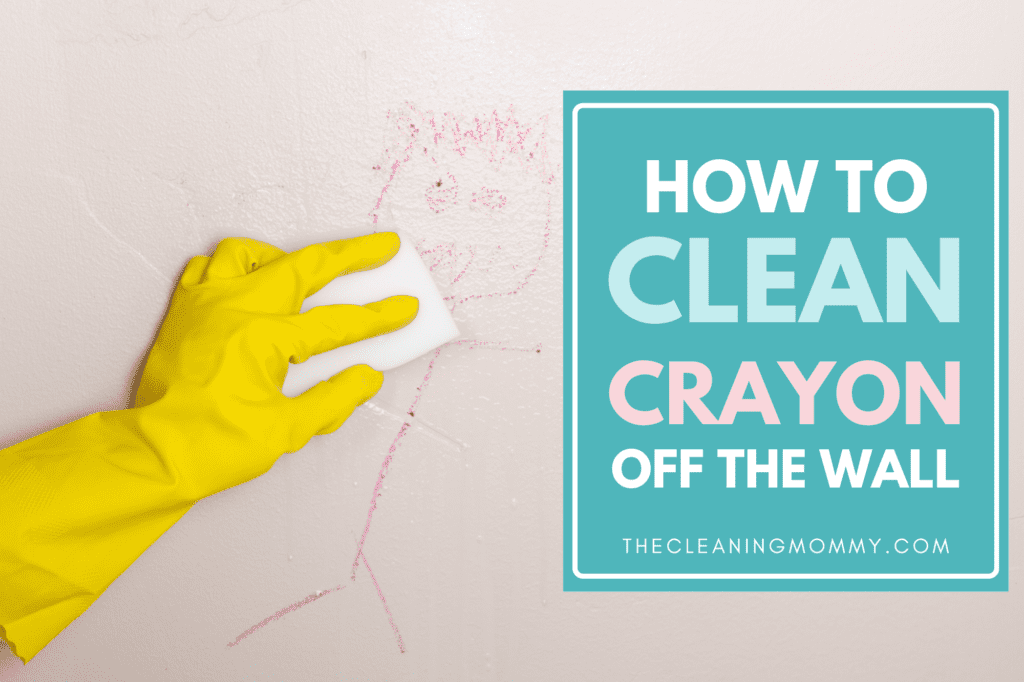
Avoid Scrubbing Too Hard
It is important to avoid scrubbing walls too hard, as this can damage the oil-based paint and cause streaks.
When cleaning walls, it is important to use a gentle touch. Scrubbing too hard can damage the paint and cause streaks. Instead, use a soft cloth or soft sponge and a light amount of pressure to gently rub. Be sure to rinse the cloth or sponge often so that it stays clean.
Use a Gentle Cleaning Solution
It is important to use a gentle cleaning solution when cleaning walls. Using a harsh detergent can damage the paint or wallpaper and leave streaks. A gentle cleaning solution will remove the dirt and dust without harming the surface of the wall.
You can clean your walls and remove stains with a mild bleach solution, but be sure to test the solution on an inconspicuous area first to make sure it does not damage the finish. If you are cleaning walls that are painted with a glossy paint, you can use a vinegar and water solution. Vinegar is a natural disinfectant and will not damage the paint.
How To Clean Different Wall Textures
How To Clean Semi-Gloss Paint Walls
In high-traffic areas like the kitchen and bathroom, this type of paint is most commonly used due to its durability. Glossy kitchen backsplashes and vanity doors can be cleaned with a mild degreaser. It is still possible to scratch glossy and semigloss paint, so always use a soft sponge when you clean your walls.
You will need:
- Sponge or Damp Cloth
- Dish soap
- Water
- Microfiber cloth
Step 1: Mix
Dish soap can be added to warm water by adding a drop. Combine both ingredients.
Step 2: Clean
Almost completely wring the sponge out after it is dampened in the mixture (or use a damp cloth). Gently rub walls in a circular motion.
Step 3: Dry
Using a dry microfiber cloth, wipe the clean walls.
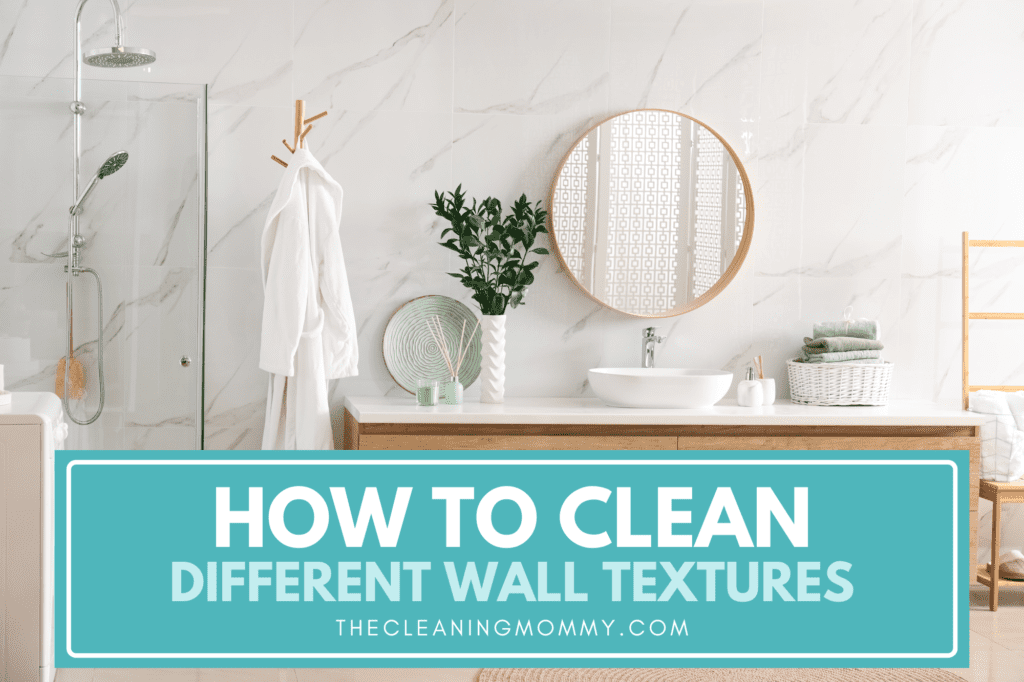
How to Clean Walls With Flat Paint
There are several types of paint finishes that require more maintenance, including flat paint, satin, and eggshell. Flat-painted walls should not be cleaned with harsh chemicals or degreasers.
Avoid too hard scrubbing when using a sponge. It is recommended that you wring out the sponge almost completely before applying it to the walls.
The Things You Need
- Water
- Sponge Or Soft Cloth
- Microfiber cloth
Step 1: Wipe Walls
Dampen sponge or cleaning rag. Dry almost completely by wringing out. Gently wipe walls in a circular motion.
Step 2: Dry Walls
Dry microfiber cloths or any lint-free soft dry cloth should be used to wipe clean walls.
How to Clean Latex-Painted Walls
Here’s what you need
- All-purpose cleaner that is non-abrasive
- Water
- Sponge
- Microfiber cloth
Step 1: Mix
Using warm water and an all-purpose cleaner is the best way to clean latex paint walls.
Step 2: Clean Wall
Wring out a clean sponge after dipping it in the mixture. It would be best if you gently rubbed the wall in a circular motion. Doorknobs and light switches, which get touched often, deserve special attention. After rinsing with clear water, use a second sponge.
Step 3: Dry The Wall
Dry the latex paint covered clean walls with a microfiber cleaning cloth.
Other cleaning tips: Using a nonabrasive pad, rub a paste of baking soda and water on stubborn spots, such as fingerprints, newspaper smudges, or scuffs. Using rubbing alcohol is easy to clean, particularly if you do not have access to a cleaner (or white vinegar and water combination).
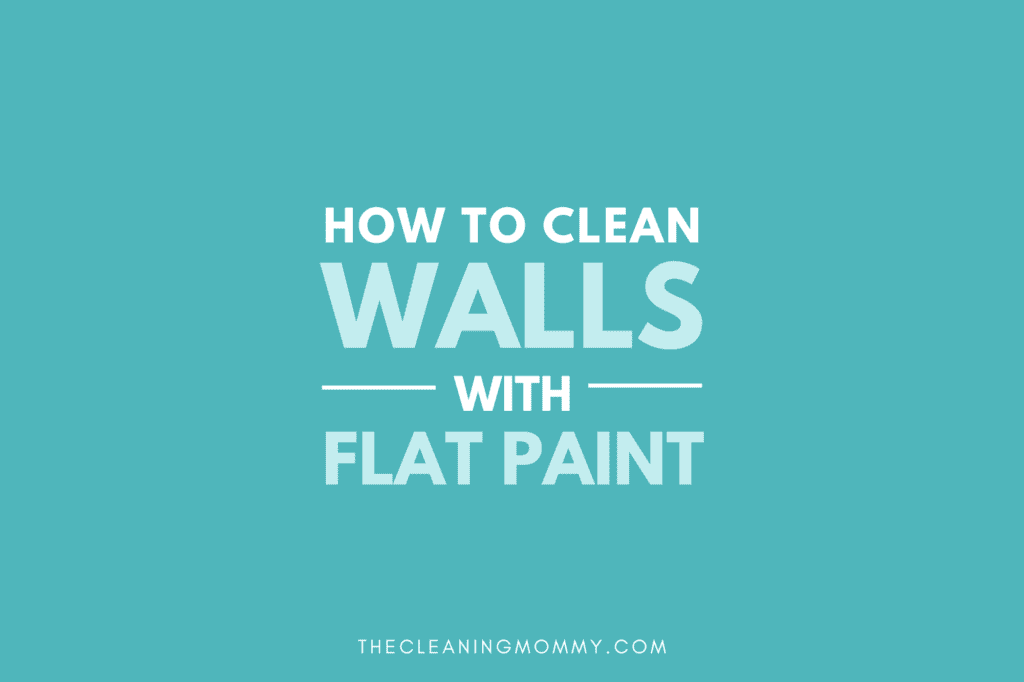
How to Clean Oil-Based Painted Walls
You’ll Need
- Dish soap
- White vinegar
- Water
- Sponge or clean cloth
- Microfiber cleaning cloth
Step 1: Create a Homemade Cleaning Solution
Combine 1 tsp. Of liquid dish soap with a quart of warm water. 1/4 tsp of white vinegar should be added. Apply the solution to the stain and let it sit for 10 minutes.
Step 2: Clean Walls
Only slightly dampen the sponge or cloth. Wipe the oil based paint walls gently. If your walls are texture-painted, they will likely collect dust, requiring a deeper cleaning. Borax should be added to each pint of water when cleaning walls.
Step 3: Dry Walls
Dry microfiber cloths are best for wiping clean walls with oil based paint.
How to Clean Textured Walls
Tools You’ll Need:
You will need to gather the right cleaning supplies before you begin cleaning a textured wall. Among the supplies are old toothbrushes, cleaning brushes, nylon rags, buckets, vacuum cleaners or air blowers, hand dusters, all-purpose cleaners, or mild dishwashing detergents, ladders or stepstools, and water.
Do not wet the wall immediately after collecting the cleaning supplies. While the wall is still dry, you can dust off some dirt and cobwebs. The best way to remove loose dirt from the wall is by vacuuming with a brush attachment. A powered air blower may be able to dislodge some dirt if you don’t have a vacuum.
Alternatively, you can use a handheld duster to gently scrub the entire wall, particularly in places where it is the dirtiest. For higher-up and out-of-reach parts of the wall area, you will need to use the ladder or step stool.
The whole wall needs vacuuming or dusting, but once wet, the loose dust will adhere to the wall, making the task even more tedious.
Preparation of the cleaning solution follows. You can make the solution by mixing a quarter cup of dishwashing detergent or all-purpose cleaner with a gallon of water. Mix this solution in a bucket. You will need another bucket of plain water later on for rinsing.
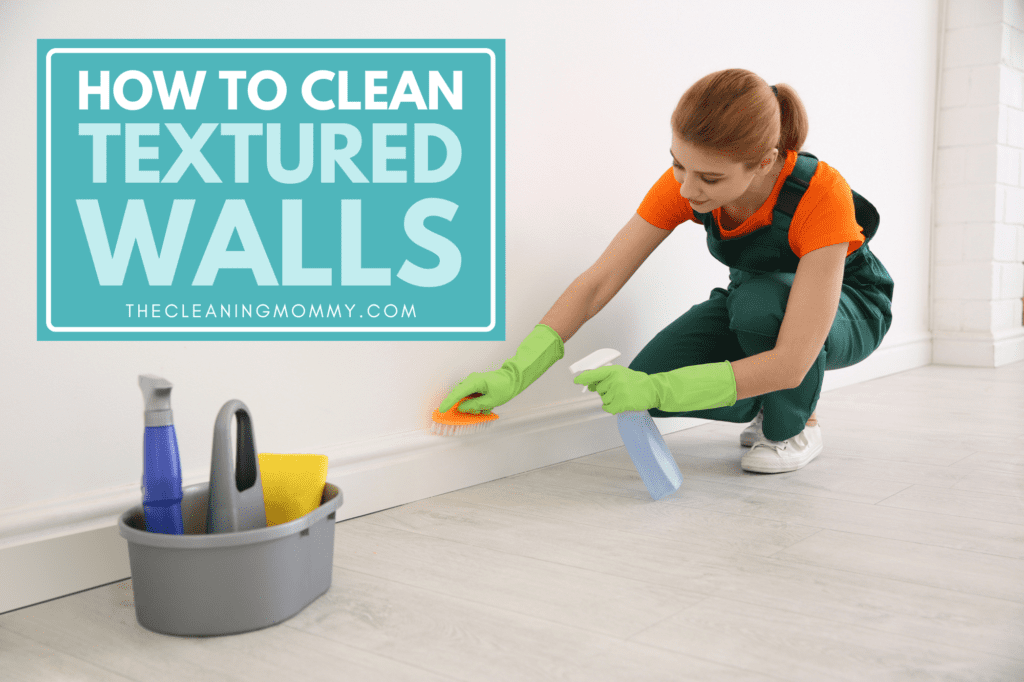
How to Clean Walls Fast and Easy
The Way To Clean Walls
The textured plaster walls are now ready for wall cleaning. Apply the solution using the nylon rag to the wall. Then, gently scrub parts of the wall while dipping the cloth into the solution. When working on an enormous wall, we recommend tackling it in sections. Dirt can be removed from crevices with the help of cleaning brushes. If you need to clean nooks and crannies that are smaller, use a toothbrush.
A sponge wouldn’t have been as effective as a brush. In spite of the fact that sponges are great for cleaning smooth walls, they can actually tear apart on textured walls, leaving pieces on the wall that are difficult to remove.
The solution you’ve applied to the wall must be rinsed once you’ve finished all or the first part of the wall. The solution should be wiped off with a clean cloth and the bucket with clean water. Brushes are useful for cleaning out smaller areas.
Ensure that all cleaning solution has been removed. In any case, soapy residue could be left behind on the wall once it dries. If you have painted your textured surface in a darker color, white marks will appear.
How to Clean Ceramic Tile Shower Walls
A mop or steamer can’t be used to clean ceramic tiles in the shower. Cleaning shower tiles can be done with a variety of products that will keep them looking clean and fresh.
In your shower, you should first check what kind of tiles you have. It is common to use ceramic tiles for shower walls, but ceramic tile for shower floors is seldom used due to its slippery nature. For natural tiles such as granite or marble, always use the appropriate cleaning products.
- Remove soap residue and water from the shower with a squeegee
- Dust and dirt should be removed with a clean, dry microfiber cleaning cloth before cleaning
- To clean ceramic tiles, spray a cleaning solution from a spray bottle
- Wipe or brush the tiles clean
- Squeegee any residue left on the shower after spraying it down with the showerhead
Using white vinegar on shower tiles is the best way to clean them. You can use it on glazed ceramic tiles (but not on natural stone). In a spray bottle, combine 50/50 white vinegar and water. Spray the tiles with the mixture.
How To Clean Brick Walls
The following items will be needed:
- Old newspapers
- Brush attachment for vacuum cleaners
- Water in a spray bottle
- white vinegar or salt in dish soap
- A bristle brush
- Clean rags
Steps to follow:
- Use tarps or newspapers to cover all floors or furnishings near the brick wall.
- Dislodge loose dirt from the brick surface using a vacuum cleaner and brush attachment. Repeat as necessary.
- Don’t use the cleaning solvent on dry bricks. The dry brick will quickly absorb the solvent and end up looking faded or discolored. Instead, use the spray bottle to soak the wall in water.
- Surfaces can be cleaned with dish soap and salt or with white vinegar. Both methods may be used, depending on the severity of the stain. First, use the dish soap and salt.
- For white vinegar mixture
Add a 50:50 ratio of white vinegar and plain water to a large bowl and mix well.
Then, use a spray bottle to spread the solution evenly on a section of brick surface 3 by 3 feet. With a bristle brush, scrub the brick and mortar gently from top to bottom.
With a warm rag soaked in water, wipe off the solution after it has sat for ten minutes. Continue with the other brick surfaces.
- For boric acid
To dilute boric acid powder in warm water, place a tablespoon of powder in a large bucket after putting on safety gear. Using a brush, apply the solution to a 3-by-3-foot area of brick surface.
Brush the surface firmly using circular motions after saturating the brush with the liquid. Wipe the surface with a clean rag soaked in warm water.
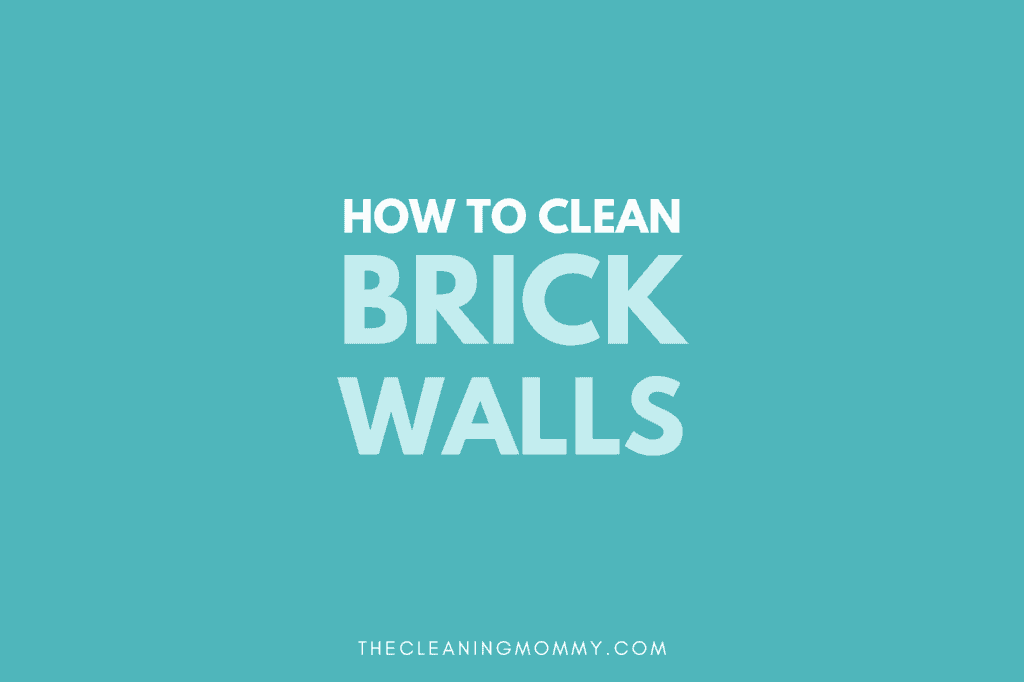
How to Clean Concrete Walls
Concrete walls can be a great way to add some extra texture and interest to a space, but they can also be difficult to keep clean. Here is a simple guide on how to clean concrete walls.
Step 1: If the walls are indoors, you can remove any excess dust and dirt with a feather duster. If the walls are outdoors, you can spray them down with water to remove any dirt or dust.
Step 2: Adding a few drops of dish soap to a 1-gallon bucket of hot water can be an effective way to clean your dishes. The dish soap will help to remove grease and grime, and the hot water will help to loosen dirt and debris. Just be sure to use a dish soap that does not contain ammonia, as this can damage some surfaces.
Step 3: First, use a microfiber cloth or mop to avoid leaving streaks. Second, be careful not to get the wall too wet – you don’t want to risk damaging the paint or wallpaper. And finally, for stubborn stains, use a firm bristled brush to scrub away marks.
Step 4: When finished, rinse the wall with clean water to remove any soap residue.
How to clean bathroom walls
If your walls are starting to look a little dingy, it might be time to give them a good cleaning. Luckily, cleaning bathroom walls is relatively easy and only requires a few simple supplies.
First, start by wiping down the walls with a damp cloth to remove any dirt or dust, especially if they are steamed up.
Fungi are a type of microorganism that can grow on a variety of surfaces, including walls. While some types of fungi are harmless, others can cause serious health problems. Bathrooms are particularly susceptible to fungi growth due to the moist environment. To help prevent the growth of harmful fungi, it is important to clean bathroom walls on a regular basis with a fungicidal cleaner.
Fungicidal cleaners contain ingredients that kill fungi on contact. In addition to cleaning bathroom walls, they can also be used to clean other areas of the home where fungi may be present, such as kitchens and laundry rooms. By using a fungicidal cleaner, you can help keep your home clean and safe from harmful organisms.
After you finish cleaning the bathroom walls, it’s important to remove any residual moisture to prevent the growth of mold and mildew. The easiest way to do this is to run the fan. The fan will help to circulate air and remove any leftover moisture from the walls. In addition, it’s a good idea to open the window or door to allow fresh air to enter the room. This will also help to remove any lingering moisture and help to prevent the growth of mold and mildew. By taking these simple steps, you can help to keep your bathroom clean and free of mold and mildew.
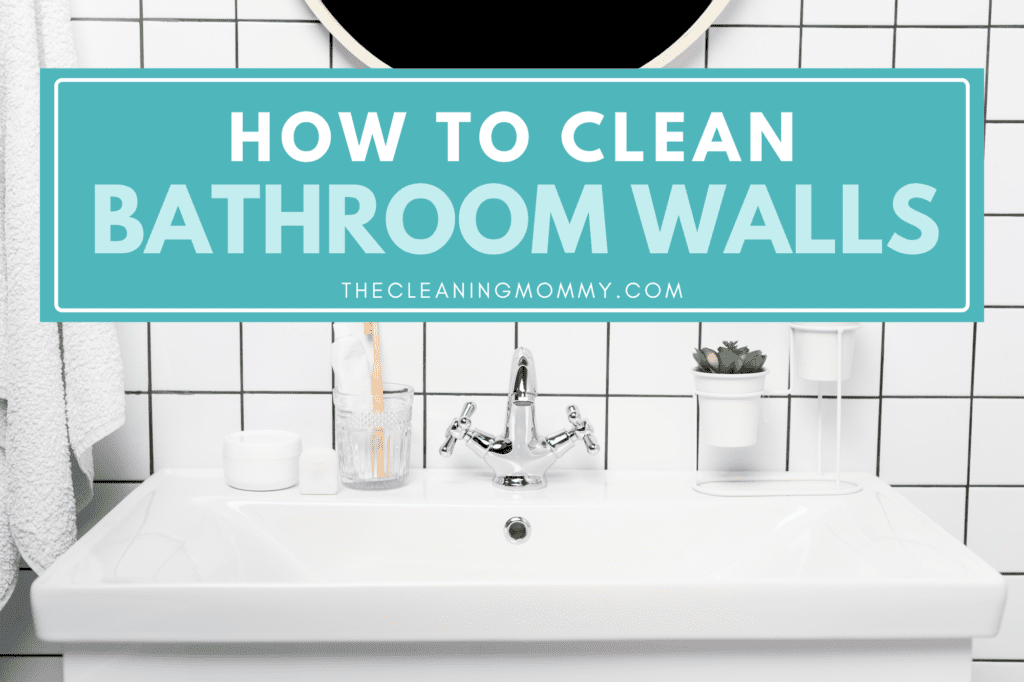
How To Clean Kitchen Walls
When it comes to cleaning your kitchen walls regularly of grease stains, an all-purpose cleaner or a kitchen degreaser will usually do. If your surface is painted or tiled, make sure it is safe to use. To prevent any chemicals from adhering permanently or damaging the walls, you may want to wipe the walls with plain water after using any chemical mixture. Furthermore, you will be able to prepare food safely (you’ll thank us for this great tip later)
Almost always, you can clean your walls with regular dish soap and water mixed together. Store this in a spray bottle so you can easily access it. Keep your kitchen clean by spraying and wiping walls once or twice a week. As soon as you notice a grease stain, spot clean the area before general wall cleaning.
It’s important to act promptly when you have wall stains. Stains can be removed more easily if you clean them as soon as possible. Your pantry probably already contains the best product for cleaning walls.
How To Clean Difficult Stains Off Walls
What You Need
- Baking soda
- Warm water
- Clean cloth
- Microfiber cloth
Step 1: Combine Baking Soda and Water
Make a paste by mixing baking soda (1 tsp) and warm water.
Step 2: Apply the mixture to the stain
Make sure the formula is well absorbed into the wall stain by gently massaging it in the stubborn stains. Clean, damp cloths should be used to remove residue. When wall cleaning, it is especially effective on grease stains because of its gentle abrasive.
Step 3: Dry the Walls
Dry microfiber cloths should be used to wipe walls.
How To Clean Mold
Mix bleach with water in a ratio of 1 part to 3 parts. A hardware store or home center may have branded products that will also kill mold if you do not want to use bleach, but you would like something other than water.
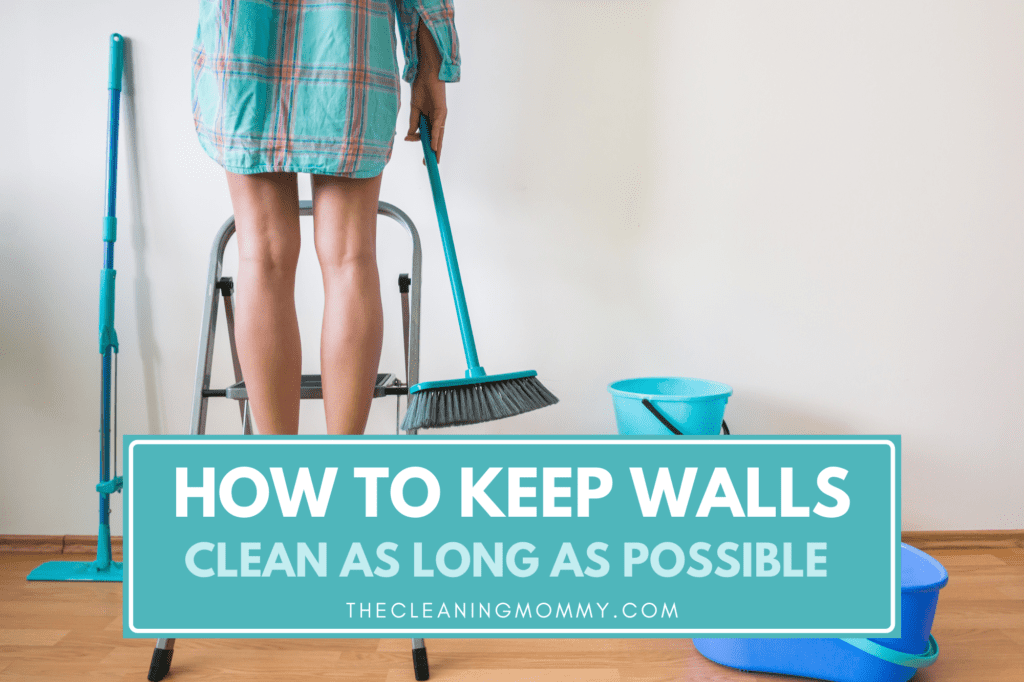
How To Clean Crayon
An excellent method of removing crayon marks is to use baking soda, a household staple. A rag should be dampened with warm water before being dipped in baking soda. The stained area should be scrubbed for approximately 10 minutes, or until the crayon starts to dissipate.
It may be necessary to wring out the rag and use fresh water once or twice in order to achieve the most effective results.
Toothpaste
Crayon marks can also be removed from walls with toothpaste. If you’re going to use toothpaste, make sure it’s not gel, because gel toothpaste stains worse. The cheapest scrub brush you can find will also work for wall cleaning. Let it soak for 10 minutes, then scrub it with warm water.
Smoke
Use hot water, dish soap, and baking soda to make a cleaning solution. Apply this solution to a rag and scrub the walls. Dry each area of the wall with a cloth right after you’re done, so the drywall doesn’t get wet.
How To Keep Walls Clean As Long As Possible
Your walls will look freshly painted if you keep them dust-free. You’ll spend less time scrubbing walls if you do preventive maintenance.
Here are a few tips to keep your walls clean for as long as possible. First, dust regularly with a soft cloth or feather duster. Be sure to reach all the nooks and crannies, as dust can accumulate quickly.
Use a soft brush attachment on your vacuum to keep painted walls clean. A great tip: you can use an electrostatic dusting wipe or a cloth-covered broom or mop (sprinkle them with a dusting agent for best results).
Second, if you have any smudges or fingerprints on your walls in high traffic areas, use a mild soap and water solution to clean them. Wipe in a circular motion until the mark is gone.
Third, if you have any stains on your walls, try using a vinegar and water solution. Apply the mixture to the stain and scrub gently until it disappears. But keep in mind a multipurpose cleaner may work too.
Fourth, if your walls are looking dull, you can add a fresh coat of paint. This will help to brighten up your space and give it a new lease on life. This is ideal for spring cleaning time.
Finally, if you have any cracks or holes in your walls, be sure to repair them right away. Cracks and holes can let dust and dirt inside, making it harder to keep your walls clean. By following these simple tips, you can enjoy clean walls for many years to come. Hopefully our ideas for a way to clean walls is helpful and can make a huge difference!
Other Cleaning Articles Like This:
- How To Clean Pen Off Walls
- How To Clean Kitchen Tiles
- How To Clean Ghosting On Walls
- 130+ things to declutter in your home today
- How often do I need to dust my house?
- How to get pen off walls

Grainne Foley
Grainne Foley is a wife and mother of 2 great kids. During her 5 years of full time RV travel, Grainne learned to become very efficient at household chores, in order to make time for family adventures. Now, back in a house, she has continued to create tools and techniques to help others lighten the load of household organization and cleaning.
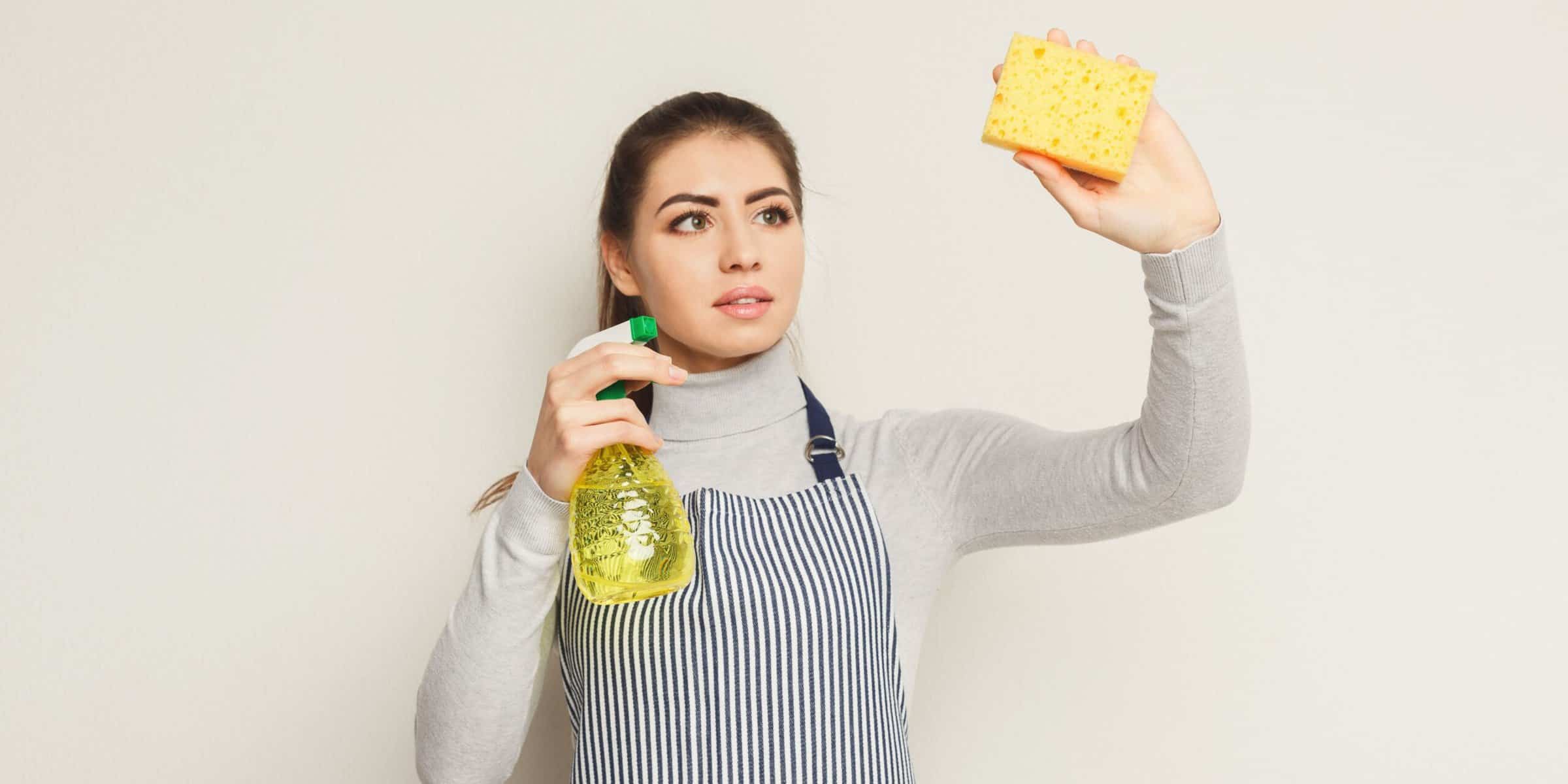
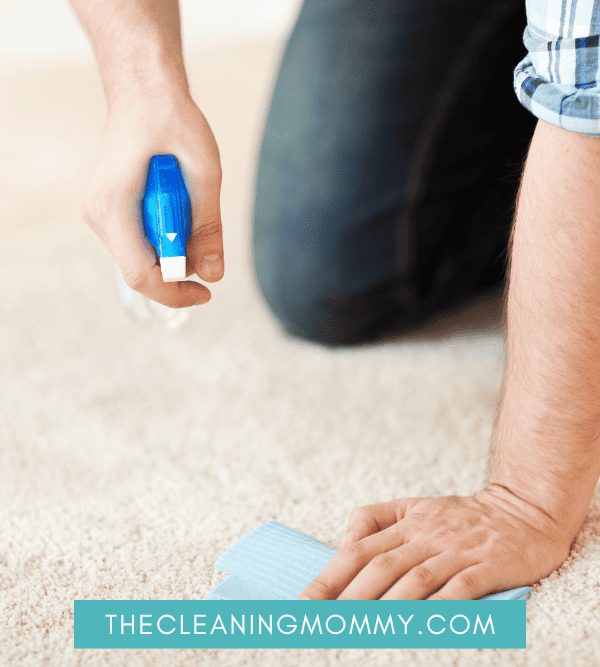
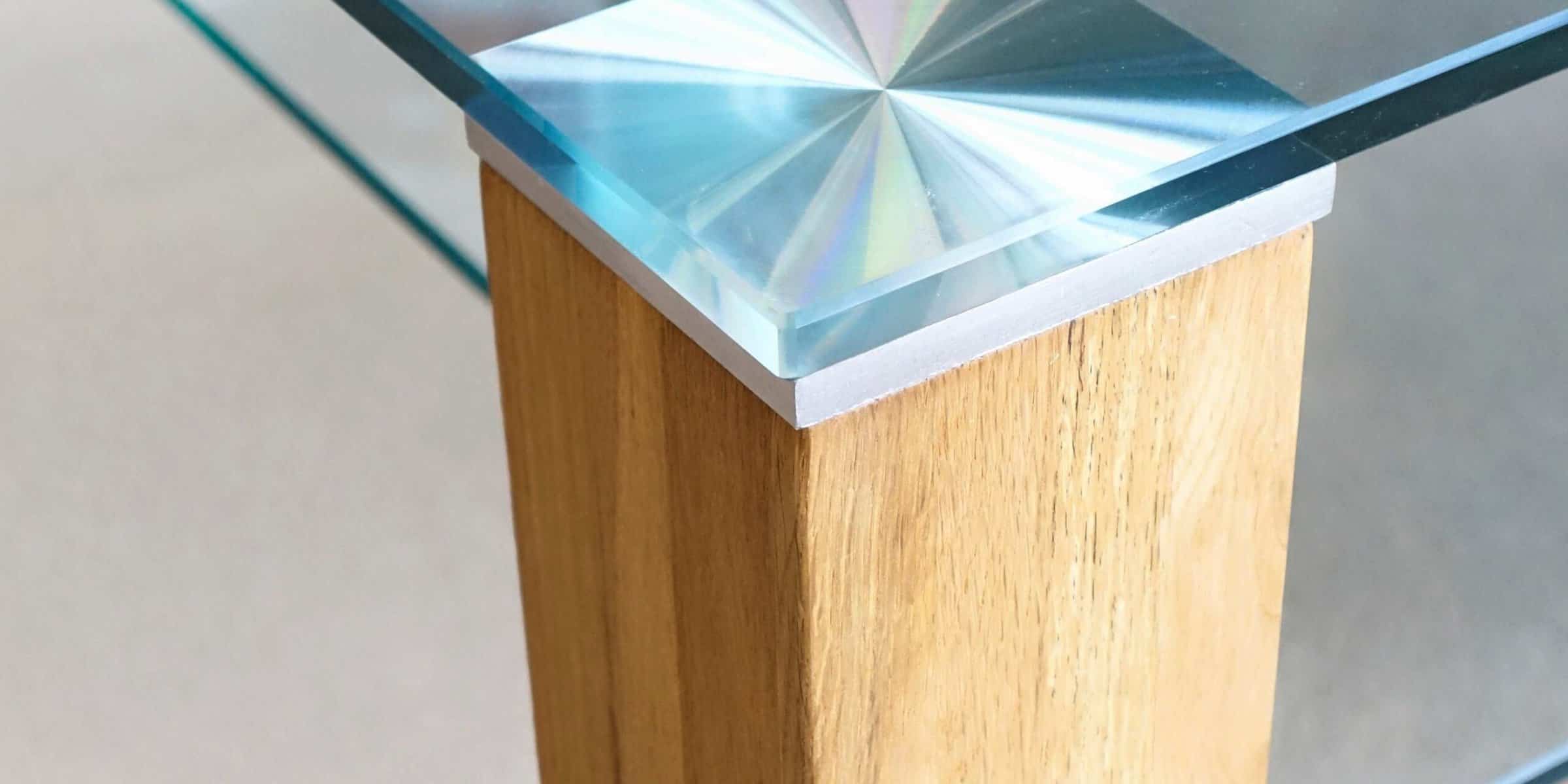
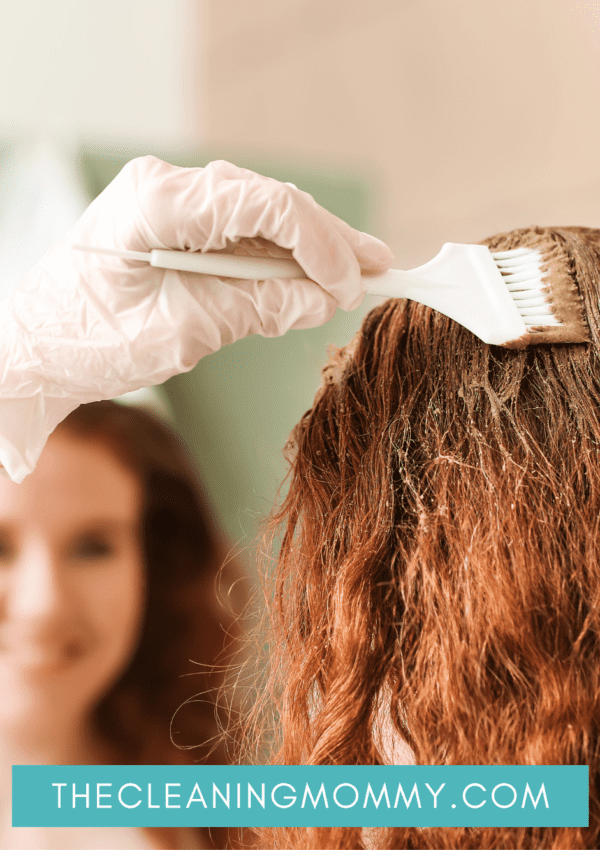
Leave a Reply